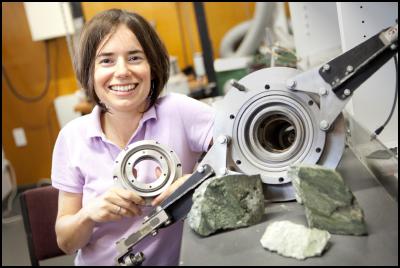Understanding Alpine Fault Will Help Preparation For Future
Friday, 15 March 2013, 11:06 am
Press Release: University of Canterbury
Understanding The Alpine Fault Will Help Preparation For Future Quakes, UC Researcher Says
March 15, 2013
Understanding the Alpine Fault, which forms the Australian-Pacific plate boundary on the South Island, will help lifeline and emergency management organisations be better prepared for any future large magnitude earthquakes, University of Canterbury (UC) researcher Carolyn Boulton says.
Boulton is finishing her PhD research project on the Alpine Fault which has not suffered a major earthquake since 1717 AD.
``My research focuses on the effects of earthquakes on rocks comprising the Alpine Fault, the largest onshore fault in New Zealand. Since we cannot yet put instruments inside a fault, we simulate earthquake processes in the laboratory under controlled conditions.
``Prior to my research, New Zealand did not have direct measurements of the strength of the Alpine Fault. We knew that the fault must be strong because it stores seismic energy and releases it periodically in large magnitude earthquakes.
``Through my research, we have learned that the fault gets stronger with increasing temperature and pressure with increasing depth. We have also learned that when an earthquake occurs, the Alpine Fault’s strength dramatically decreases.
``When the next Alpine Fault event occurs, experts will be inundated with scientific data about the earthquake. The more background information scientists have leading up to the next Alpine Fault earthquake, the more likely they are to make intelligent decisions about the potential impact, Boulton said.
Advertisement - scroll to continue reading
Her research, supervised by UC geology professor Tim Davies, will not enable scientists to predict the timing of the next event. But using her results, they are more likely to understand the nature of the main-shock and aftershocks associated with the next event and the underlying mechanisms responsible for the next event.
Recreating the conditions of the earth’s crust where earthquakes begin requires specialised machines which are located in only a few well-funded laboratories worldwide. At UC, Boulton is working on an advanced high-speed ring-shear apparatus which is now generating excellent data.
In the last year Boulton has also researched at three of the leading laboratories in the world - Penn State University, Pennsylvania, USA; the United States Geological Survey, California, USA; and the Institute of Geology in Beijing, China.
``At these laboratories, I have been able to study how fault strength changes during rapid sliding in an earthquake, how fault strength changes with increasing temperature and pressure and how fault strength changes at lower temperatures and pressures when weak minerals are added to the sliding surface. Taken together, these experiments are the foundation for understanding Alpine Fault mechanics.’’
Geological and Nuclear Sciences (GNS Science) estimates that there is a 30 percent probability of the next Alpine Fault earthquake occurring in the next 50 years.
The Alpine Fault’s last major earthquake in 1717 AD had a moment magnitude between 7.9 and 8.1.

Photos: Carolyn Boulton
ENDS
Advertisement - scroll to continue reading
a.supporter:hover {background:#EC4438!important;} @media screen and (max-width: 480px) { #byline-block div.byline-block {padding-right:16px;}}
Using Scoop for work?
Scoop is free for personal use, but you’ll need a licence for work use. This is part of our Ethical Paywall and how we fund Scoop. Join today with plans starting from less than $3 per week, plus gain access to exclusive Pro features.
Join Pro Individual Find out more
Find more from University of Canterbury on InfoPages.